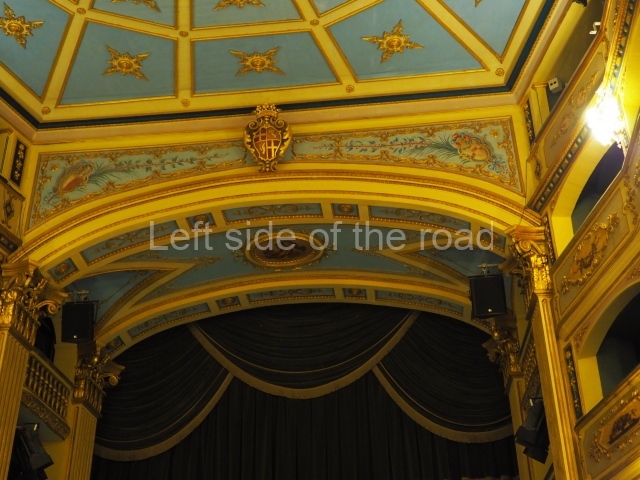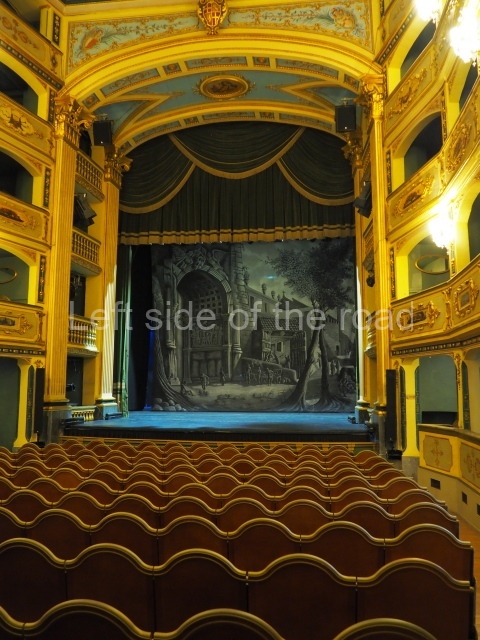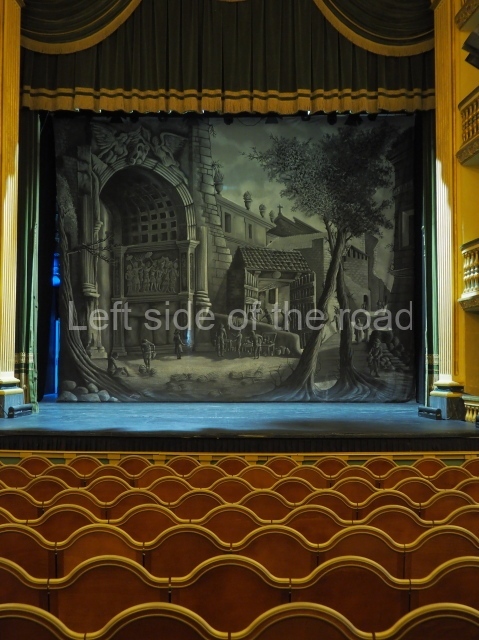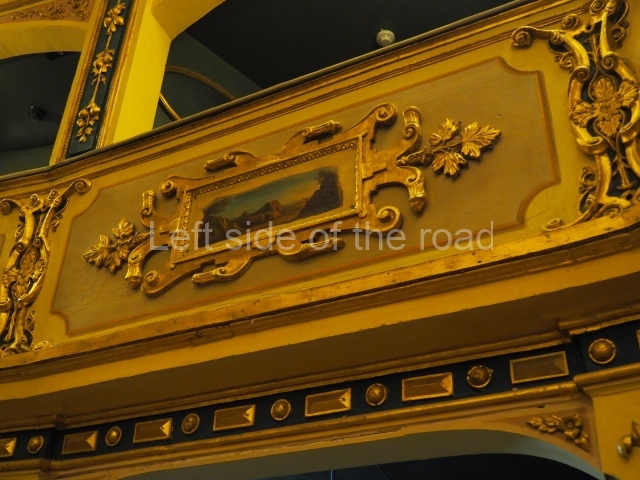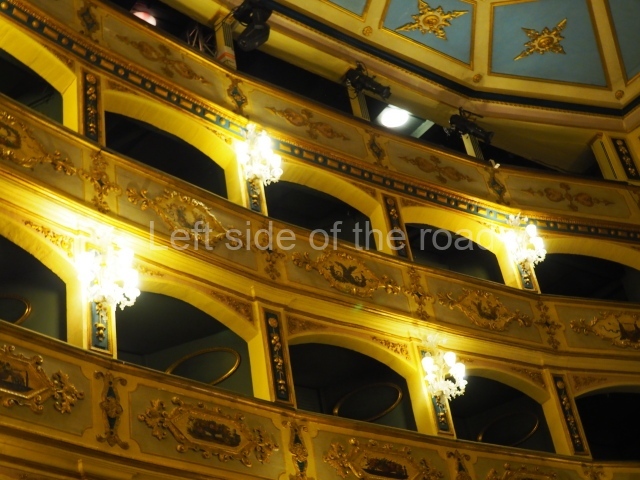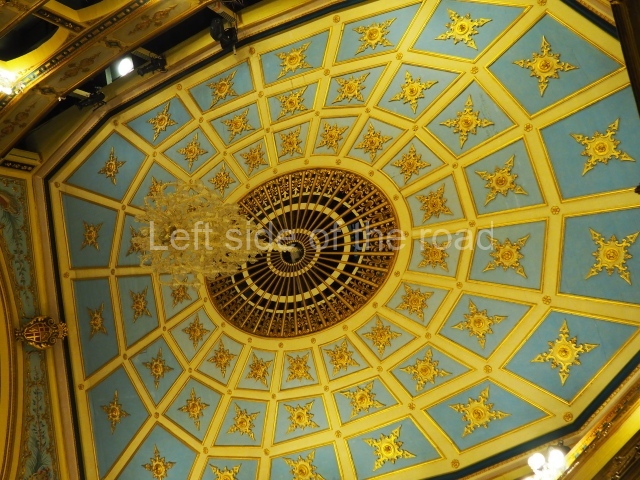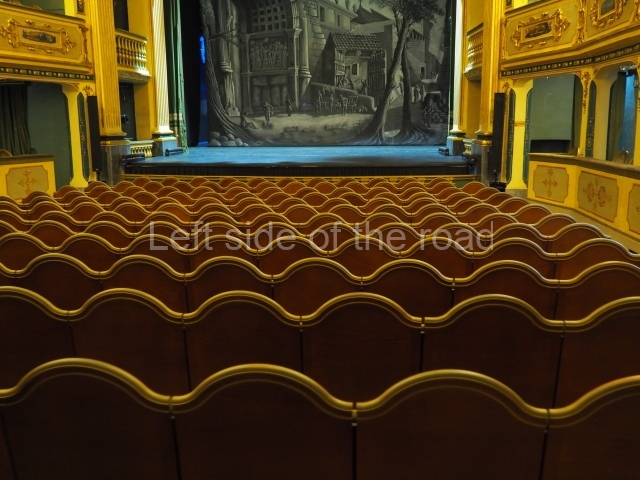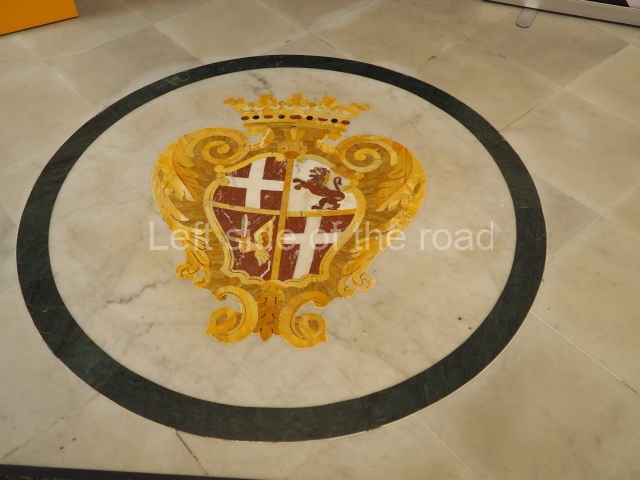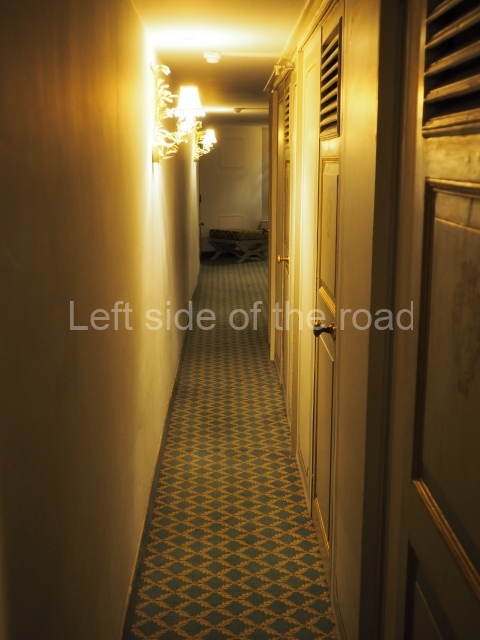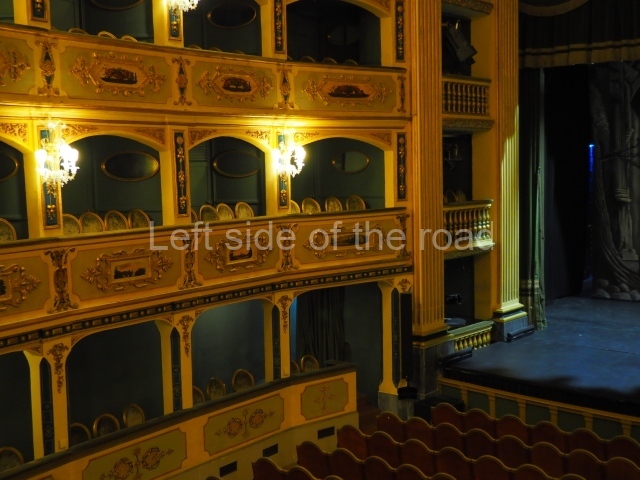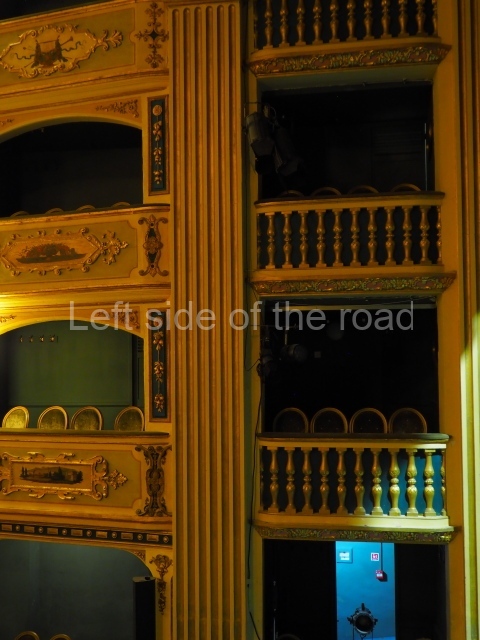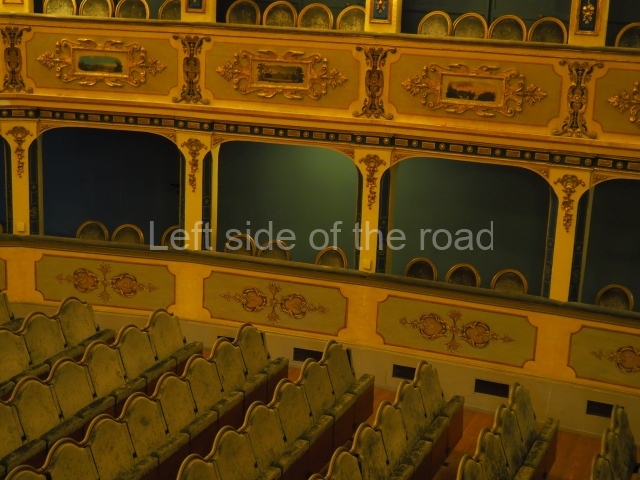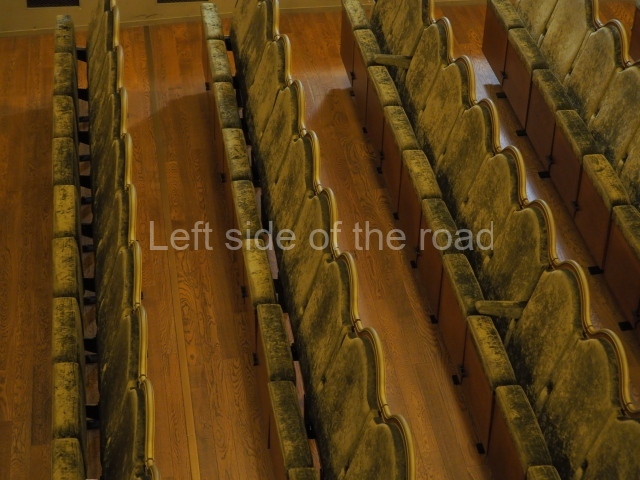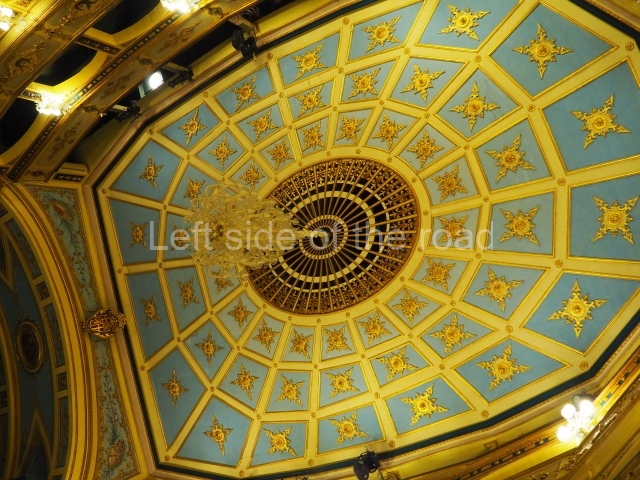Manoel Theatre – Valletta
Teatru Manoel (Maltese for ‘Manoel Theatre’) is a theatre and important performing arts venue in Malta. The theatre is often referred to as simply ‘The Manoel’ and is named after Grand Master of the Order of the Knights Hospitaller, Fra António Manoel de Vilhena, who ordered its construction in 1731. The theatre is reputed to be Europe’s third-oldest working theatre.
The theatre is located on Old Theatre Street (Maltese: Triq it-Teatru l-Antik) in Valletta. It considers itself as the country’s national theatre and the home of Malta Philharmonic Orchestra (Orkestra Filarmonika Nazzjonali). Originally called the Teatro Pubblico, its name was changed to Teatro Reale (‘Theatre Royal’) in 1812, and renamed Teatru Manoel in 1866.
The theatre is a small, 623 seat venue, with an oval-shaped auditorium, three tiers of boxes constructed entirely of wood, decorated with gold leaf, and a pale blue trompe-l’œil ceiling that resembles a round cupola. The building is a Grade 1 listed building.
Before the construction of the theatre, plays and amateur theatrical productions were staged in the halls and piano nobiles of the Knights’ auberges. These were palaces constructed for the langues of the Order. The Langue of Italy often held such entertainment, staged by its knights in their Auberge. The records of the Langue even state that, on 2 February 1697, some Maltese gentlemen presented a play in the Auberge d’Italie. Women were prohibited from attending these events after incidents during the Carnival festivities of 1639.
In 1731, António Manoel de Vilhena commissioned, and personally funded, the construction of the building to serve as a public theatre ‘for the honest recreation of the people’. The Grand Master bought two houses from the Priory of Navarre, with a frontage on what is now Old Theatre Street for the sum of 2,186 scudi. It has a plain façade, in keeping with Valletta’s Mannerist style, and has three floors with a mezzanine-level above the ground floor. The façade incorporates a doorway surmounted by a stone balustraded open balcony, itself supported by three heavy scroll corbels. The interior is decorated in Rococo style. The theatre was possibly designed by Romano Carapecchia, and was built by Francesco Zerafa and Antonio Azzopardi.
Construction was finished in only ten months. This however, may be because alterations were made to the fabric of the three adjoining houses, incorporating them into a theatre. The building occupied an area of 94½ square canes, which was later altered to 93 square canes and 2½ palms. The theatre is said to have been modelled after the contemporary Palermo Theatre. Its auditorium was originally semi-circular or horseshoe shaped, with an illuminated parterre that served as a small dance floor. The first theatrical performance to be staged at the Teatro Pubblico was Scipione Maffei’s classic tragedy Merope, on 9 January 1732. The actors in that production were the Knights themselves, and the set was designed by the Knights’ chief military architect, Francois Mondion.
During the early British Era, the ‘Teatro Pubblico’ was renamed as the ‘Teatro Reale’, going through a series of enlargements and re-modellings throughout the 19th century, most notably in 1812, when Sir George Whitmore added today’s gallery and proscenium, raised the ceiling by one storey, and added eight more boxes, bringing the total to 67. Whitmore also transformed the auditorium to the oval shape that it has today. Further alterations were made in 1844, when the Manoel’s set designer, Ercolani, repainted the panels on the wooden boxes and had them gilded. Another stratum of silver leaf was added to the panels and ceiling in 1906.
The theatre had fallen into disuse in 1866, as a result of the construction of Malta’s new Royal Opera House, designed by Edward Middleton Barry, on Strada Reale, at the entrance to Valletta. The theatre began to serve as a doss house for homeless and indigent citizens who rented out the stalls for a few pennies a night. However, in 1873, the Teatro Reale – was officially renamed ‘Manoel Theatre’ and it enjoyed a brief new lease on life when the Royal Opera House burnt down. But by 1877, the Royal Opera House had been rebuilt, and once more, Teatru Manoel was eclipsed and fell again into disuse.
During the Second World War, Teatru Manoel served as emergency accommodation for victims of the constant bombardment by the Luftwaffe and the Regia Aeronautica. In the early 20th century, it was also used intermittently as the venue for Carnival balls and, for a period of about twenty years, it operated as a movie theatre.
Despite numerous alterations over the years, it retains many of its old architectural features, such as the white Carrara marble staircase, shell-shaped niches, and Viennese chandeliers. Two water reservoirs beneath the floor create an acoustic environment that is so precise that the hushed page-turnings of an orchestra conductor can be heard clearly throughout the auditorium.
Following the destruction of the Royal Opera House by Axis bombardment on 7 April 1942, Teatru Manoel was expropriated by the Government of Malta in 1956, and was quickly restored to its former glory. It reopened in December 1960 with a performance of Coppélia by Ballet Rambert.
The theatre is being restored by the Teatru Manoel Restoration Committee. Previous restoration attempts done in the 1970s were heavily criticised, with the removal of a balcony and the reinforcement of old stone with new masonry. The first phase of the new restoration took place in 2003, and included the restoration of the paintings on the frontispiece of the auditorium boxes. In 2004, the auditorium was restored by a team of Sante Guido Restauro e Conservazione di Opere d’Arte, who unearthed paintings that will allow the understanding of the theatre’s development. This second phase included the cleaning of the gilt. The third phase included the restoration of the proscenium arch and the boxes it incorporates, while the fourth phase of the restoration project was the ceiling’s restoration, which was inaugurated on 3 October 2006. Although controversial an application to restore the theatre’s façade was approved by Maltese planning and heritage supervisory bodies and was restored in 2017.
The above text is abridged from Wikipedia.
A few images of the auditorium can be viewed in the slide show below.
Location;
115, Old Theatre Street, Valletta
GPS;
35.89981 N
14.51254 E
Visits;
It is possible to get an idea of the interior of the theatre with guided visits;
Monday, Wednesday, Thursday and Friday
Winter (1st September): 11.00 and 15:00
Summer (20th June): 11.00 and 12:00
Saturdays: 10:30 / 11:30 / 12:30
Sundays: CLOSED
Price: €10
The tours on Tuesdays are at the same times as the week day tours above but are much more of a ‘theatrical performance’ and cost €20.


